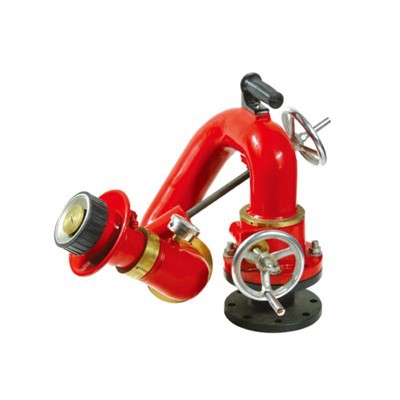Can fire hydrants be used for irrigation purposes?
As a supplier of fire hydrants, I often encounter various questions from customers, and one that frequently comes up is whether fire hydrants can be used for irrigation purposes. This is a topic that involves not only technical aspects but also legal and safety considerations. In this blog post, I'll explore this question in detail, providing you with a comprehensive understanding of the matter.
Technical Feasibility
From a technical perspective, fire hydrants can indeed be used for irrigation. Fire hydrants are designed to provide a large volume of water at high pressure, which is suitable for many irrigation needs. The water flow from a fire hydrant can be adjusted to some extent, allowing it to be used for different types of irrigation systems, such as sprinkler systems or drip irrigation.
Most fire hydrants are connected to a municipal water supply system, which means they have access to a reliable source of water. The water pressure in these systems is typically high enough to distribute water over a large area, making it possible to irrigate large gardens, parks, or agricultural fields.
However, it's important to note that using a fire hydrant for irrigation requires the proper equipment. A special adapter is needed to connect a hose to the fire hydrant. These adapters are designed to fit the specific dimensions of the fire hydrant outlet and ensure a secure connection. Without the correct adapter, water may leak, causing waste and potential damage.
Legal and Regulatory Considerations
While the technical feasibility of using fire hydrants for irrigation is clear, the legal and regulatory aspects are more complex. In many areas, using a fire hydrant for non - fire - fighting purposes is strictly regulated. Fire hydrants are primarily installed to provide a quick and reliable source of water in case of a fire. Using them for other purposes can potentially compromise their availability during an emergency.
In some municipalities, a permit is required to use a fire hydrant for irrigation. These permits usually come with certain conditions, such as specific times of use and flow restrictions. Failure to obtain a permit can result in fines or other penalties. It's essential for anyone considering using a fire hydrant for irrigation to check with their local water authority or fire department to understand the regulations in their area.
Safety Concerns
There are also safety concerns associated with using fire hydrants for irrigation. Fire hydrants are designed to handle high - pressure water, and improper use can lead to accidents. For example, if the adapter is not properly installed, the high - pressure water can cause the hose to whip around, potentially injuring people nearby.
In addition, the water from a fire hydrant may not be suitable for all types of irrigation. The water in the municipal supply system is treated for drinking purposes, but it may contain chemicals or minerals that could be harmful to certain plants. It's important to test the water quality before using it for irrigation, especially in agricultural settings.
Types of Fire Hydrants and Their Suitability for Irrigation
There are different types of fire hydrants available, each with its own characteristics. For example, Standpipes are vertical pipes that are often used in buildings or industrial settings. They are typically designed for internal fire - fighting use but can also be used for irrigation in some cases. Standpipes may have different outlet sizes and configurations, so it's important to choose the right adapter for irrigation.
Pillar Fire Hydrant is another common type. These hydrants are usually installed above ground and are easily accessible. They are designed to provide a large volume of water quickly, which makes them potentially suitable for irrigation. However, as mentioned earlier, legal and safety considerations still apply.
Cost - Benefit Analysis
When considering using a fire hydrant for irrigation, it's also important to conduct a cost - benefit analysis. On the one hand, using a fire hydrant can provide a large amount of water at a relatively low cost, especially if you have access to a municipal water supply. On the other hand, there are costs associated with obtaining a permit, purchasing the necessary equipment, and ensuring compliance with regulations.
In some cases, the cost of setting up a dedicated irrigation system may be more cost - effective in the long run. A dedicated system can be designed to meet the specific needs of your irrigation area, and it can also be more efficient in terms of water use.
Conclusion
In conclusion, while fire hydrants can technically be used for irrigation purposes, there are many factors to consider. From a technical perspective, they can provide a reliable source of water at high pressure. However, legal regulations, safety concerns, and cost - benefit analysis all play important roles in determining whether using a fire hydrant for irrigation is a viable option.
If you are considering using a fire hydrant for irrigation, I recommend consulting with your local water authority and fire department to understand the legal requirements. Additionally, make sure to use the proper equipment and take all necessary safety precautions.


As a fire hydrant supplier, I am committed to providing high - quality products and accurate information to our customers. If you have any questions about fire hydrants, including their potential use for irrigation, or if you are interested in purchasing fire hydrants for your project, please feel free to contact us for a detailed discussion and procurement negotiation.
References
- Local water authority regulations and guidelines
- Fire department safety manuals and regulations
- Industry standards for fire hydrant design and use





